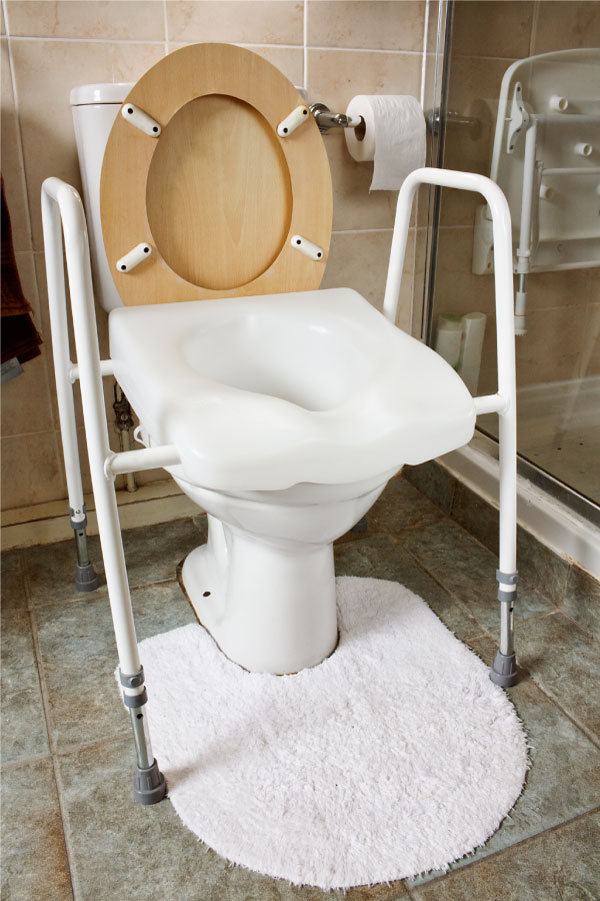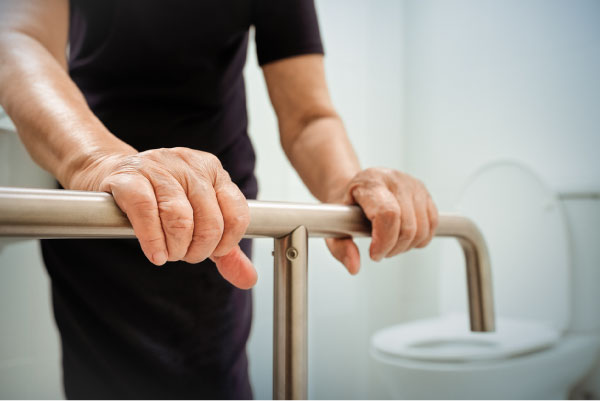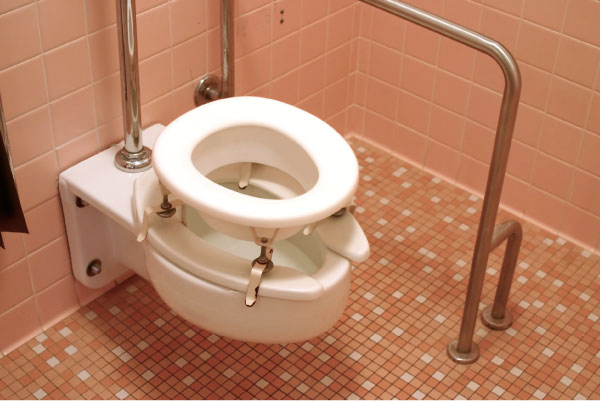
Senior home modifications are key to successfully aging in place, helping them remain in their homes for as long as possible. A raised toilet seat makes it easier for someone with mobility issues to use the toilet independently. Also called “elevated toilet seats,” they come in many different sizes and styles. It’s important to consider your loved one’s individual needs before choosing one. The wrong type raised toilet seat may actually increase the risk of a fall.
Benefits of a Raised Toilet Seat
The most people want to age-in-place and live independently in their own homes for as long as possible. That often requires home safety modifications like ramps, grab bars, extra stair rails, and a bathroom makeover. The benefits of an elevated toilet seat include:
- Safety: Seniors fear falls because fractures – particularly hip fractures – are hard to recover from. The bathroom is one of the most dangerous rooms in the home. Many falls happen when sitting down on or standing up from the toilet.
- Privacy: This isn’t an activity where people typically want an audience.
- Independence: Difficulty with self-care is one of the main reasons that seniors enter assisted living.
Raised Toilet Seat Features and Options

They come in many shapes, sizes, and configurations. Spend some time researching the options and comparing them to your needs. Here are some of the most common issues to consider:
- Shape: The shape of the raised toilet seat needs to match the shape of the toilet – elongated or round.
- Height: Most seats provide 2-6 inches of additional height. Don’t assume that “taller is better.” Make sure the person using the raised toilet seat can still keep their feet fully on the floor. Otherwise, they’ll have trouble standing up safely.
- Weight capacity: Standard seats are rated for up to 250-300 pounds. A larger person should consider a bariatric raised toilet seat that can support 300 pounds or more.
- Closure type: Health experts say that you should always close the toilet lid before flushing to prevent “toilet plumes” from spreading bacteria (like e coli) in your bathroom. Choose a lidded seat unless the user may have trouble opening and closing it.
- Armrests: Armrests help people sit and rise comfortably, but some health professionals warn about stability issues. If the seat isn’t attached securely to the toilet, weight on the armrests can cause the entire seat to tip over. Grab bars placed on either side of the toilet offer more stability.
- Slip-in bracket: This is an asymmetrical option for people recovering from leg or knee injuries/surgeries. The seat is angled, with a dip on one side that gives easier, more comfortable access to the seat.
Types of Raised Toilet Seats

The type of elevated toilet seat you choose depends on the health and physical capabilities of the user.
- Clip-on: The seat fits over the existing toilet seat and has a small opening in the front. To install one, press the ends together in the front, and slide it into the toilet seat opening. Release the ends, and the seat springs into place. They’re portable and easy to install/remove.
- Non-locking: These are designed for relatively healthy individuals with good balance, but who have trouble sitting and standing. They’re often recommended as sort-term solutions for post-surgical patients. A non-locking seat replaces the existing seat. It’s pressed down onto the toilet bowl. There are no locking devices to hold it in place and no armrests.
- Locking: These elevated toilet seats offer more stability because they either clamp to the toilet bowl, bolt to the toilet, or use a combination of clamps and other locking mechanisms. Some also include armrests. If the patient needs the added support of armrests, make sure the seat is securely attached to the toilet.
- Safety frames: This freestanding frame holds a separate toilet seat. It’s placed over the toilet, not attached. It’s the most stable option, but it also takes up more space than the other types of raised toilet seats. You can adjust the height of most models, and even the width in some cases. Because the frame takes the person’s weight instead of the toilet seat, the frame models are good choices for heavier users.
Some shower chairs also have a commode option. That makes it easier for someone to maneuver between the toilet and the shower. It’s a cost-effective option and especially good for small spaces.
Important safety reminder: Even if your raised toilet seat is securely attached and has armrests, you should still have secure grab bars near the toilet just in case.
Raised toilet seats aren’t just for seniors. Anyone with mobility problems, joint pain, or similar health conditions can benefit from this inexpensive bathroom modification.







